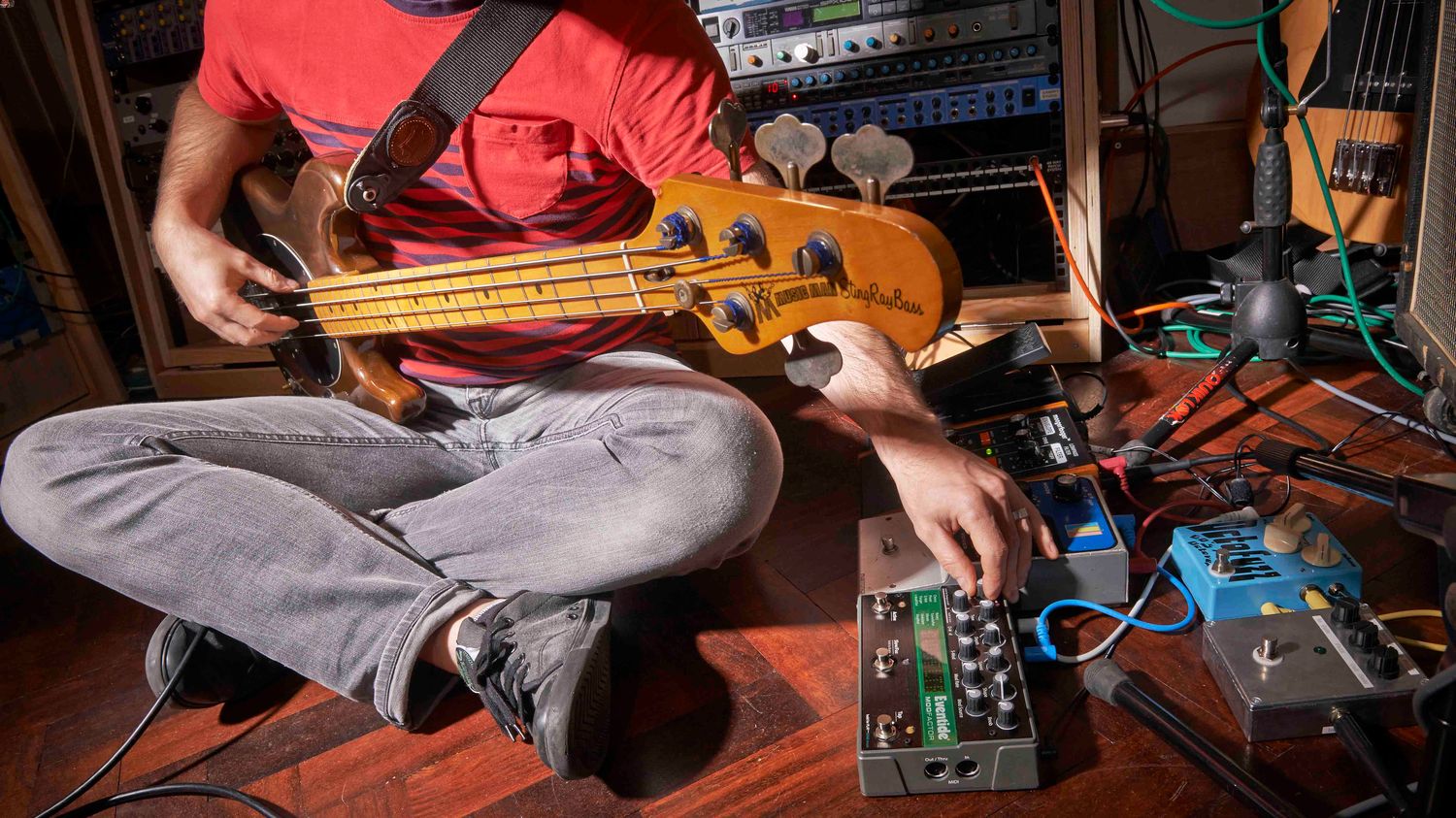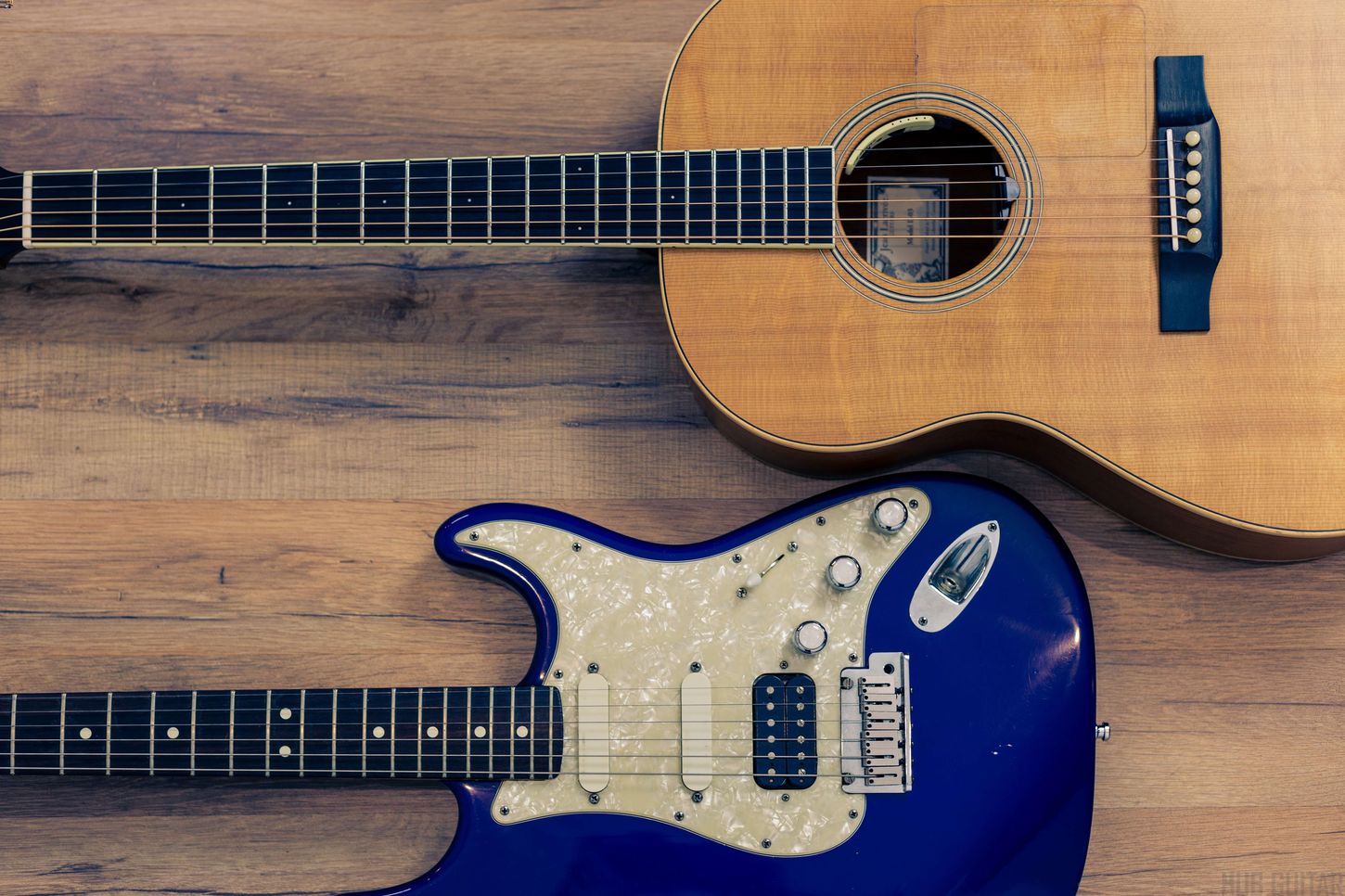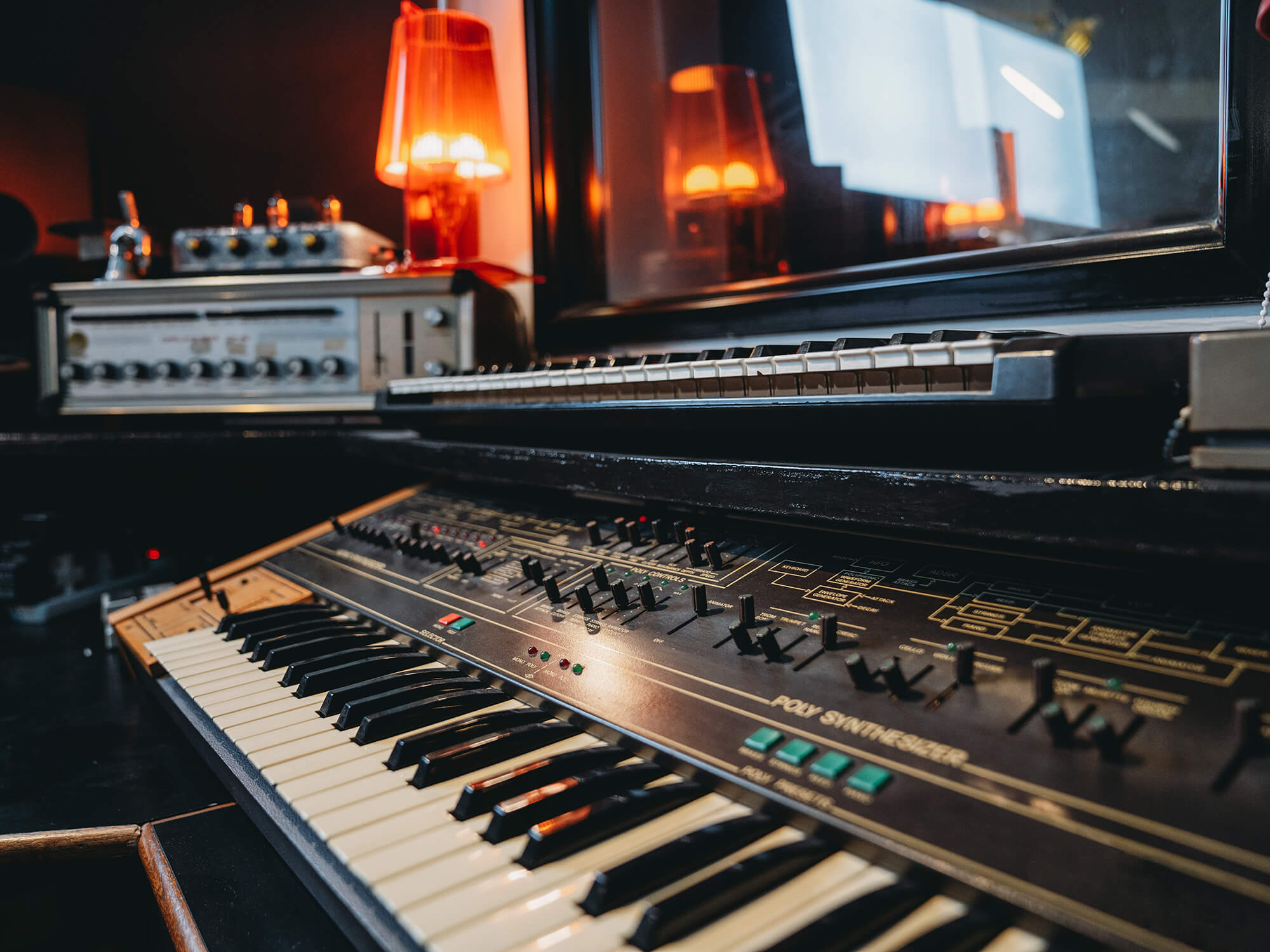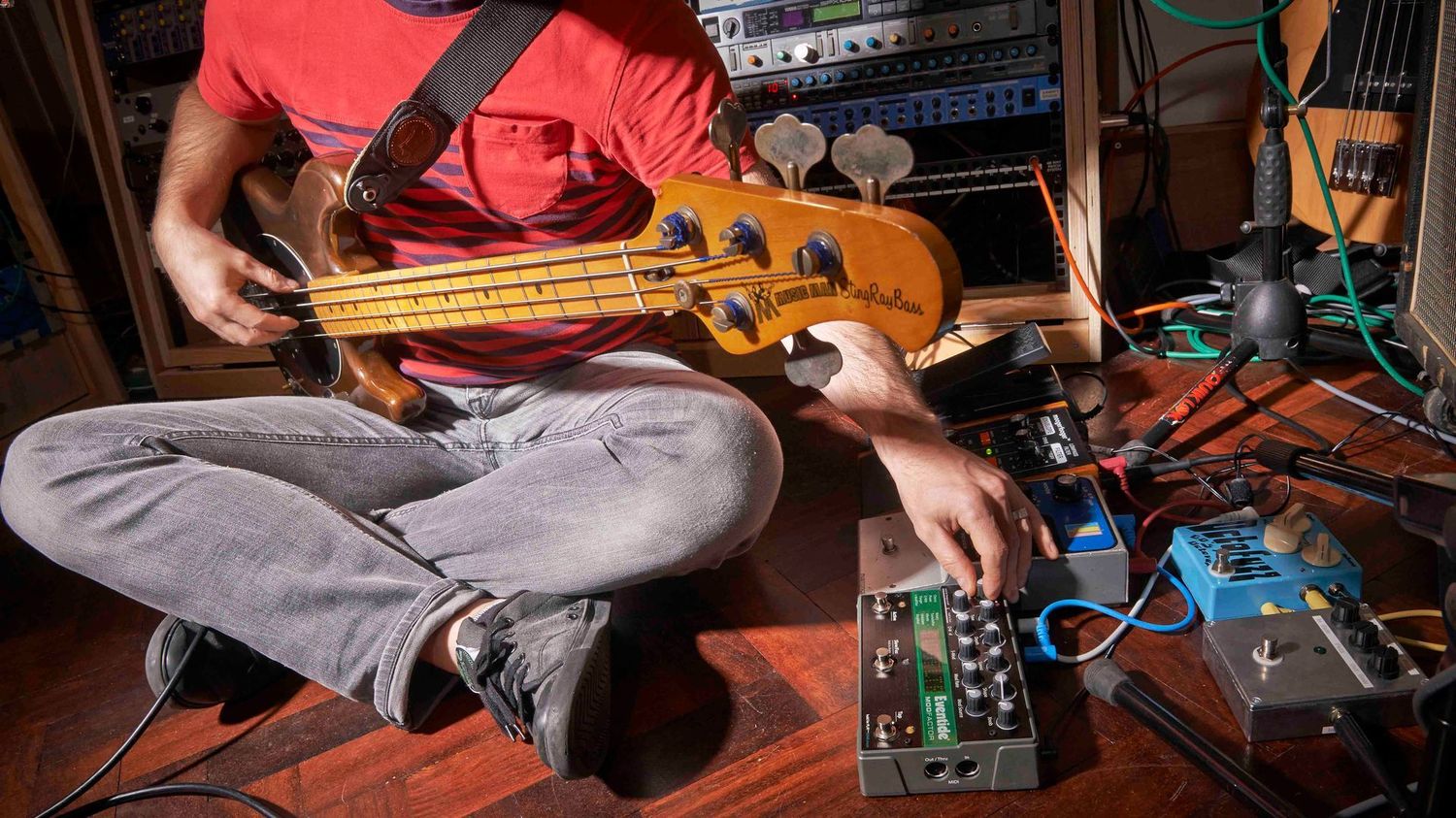Home>Instruments>Guitar>How To Make A Guitar Sound Like A Bass


Guitar
How To Make A Guitar Sound Like A Bass
Published: February 13, 2024
Learn how to make your guitar sound like a bass with these simple techniques. Transform your guitar into a powerful bass instrument with ease.
(Many of the links in this article redirect to a specific reviewed product. Your purchase of these products through affiliate links helps to generate commission for AudioLover.com, at no extra cost. Learn more)
Table of Contents
Introduction
Have you ever wondered if it's possible to make a guitar sound like a bass? While the guitar and bass are distinct instruments with their own unique characteristics, there are techniques you can employ to emulate the deep, resonant tones of a bass using a standard guitar. Whether you're a guitarist looking to expand your sonic palette or a songwriter seeking to add depth to your compositions, the ability to make your guitar sound like a bass can open up a world of creative possibilities.
In this article, we'll explore the methods and techniques that can help you achieve a bass-like sound on your guitar. From understanding the fundamental differences between guitars and basses to exploring alternate tunings and utilizing effects pedals, we'll delve into the various approaches that can transform your guitar into a versatile instrument capable of producing rich, low-end tones. Additionally, we'll discuss specific playing techniques that can help you emulate the rhythmic and melodic qualities typically associated with bass lines.
Whether you're a seasoned guitarist or a newcomer to the world of stringed instruments, the prospect of making your guitar sound like a bass is an exciting venture that can add a new dimension to your musical repertoire. So, grab your guitar, open your mind to experimentation, and let's embark on a journey to unlock the potential of your instrument in creating bass-like sounds.
Understanding the Differences Between Guitars and Basses
Before delving into the techniques for making a guitar sound like a bass, it’s crucial to grasp the fundamental disparities between these two instruments. While both the guitar and bass belong to the same family of stringed instruments, they serve distinct roles within a musical ensemble.
First and foremost, the most apparent dissimilarity lies in their pitch range. A standard guitar is tuned to EADGBE, covering a wide tonal spectrum that encompasses both low and high frequencies. In contrast, a bass guitar is tuned to EADG, with each string producing lower frequencies than its guitar counterpart. This difference in tuning directly influences the sonic characteristics of each instrument, with the bass guitar specializing in producing deep, resonant tones that form the foundation of many musical compositions.
Furthermore, the physical dimensions of guitars and basses contribute to their tonal disparities. Bass guitars typically feature longer necks and thicker strings, allowing for the production of extended, low-frequency vibrations. In contrast, the shorter scale length and thinner strings of a standard guitar facilitate the generation of higher-pitched sounds.
Another critical distinction lies in the playing technique and role within a band or ensemble. While guitarists often focus on chordal accompaniment, melodic lines, and solos, bassists primarily provide rhythmic and harmonic support, anchoring the musical structure with foundational bass lines. This difference in playing style and function necessitates unique approaches to tone production and musical expression.
Understanding these differences is essential for effectively replicating bass-like tones on a guitar. By comprehending the distinct sonic characteristics, playing techniques, and roles of guitars and basses, you can embark on a transformative journey to emulate the deep, resonant qualities of a bass using your guitar. With this knowledge as our foundation, we can now explore the specific methods and techniques for achieving a convincing bass-like sound on a standard six-string guitar.
Tuning Your Guitar to Sound Like a Bass
One of the most fundamental approaches to make your guitar sound like a bass involves altering its standard tuning to emulate the lower-pitched range of a bass guitar. While a standard guitar is typically tuned to EADGBE, several alternative tunings can be employed to achieve bass-like tones, effectively expanding the sonic capabilities of the instrument.
An popular method involves tuning the guitar down to pitch ranges commonly found on a bass guitar. One common approach is to tune the guitar’s strings down by one octave, effectively replicating the tuning of a standard bass guitar (EADG). This adjustment results in a significant drop in pitch, allowing the guitar to produce deep, resonant tones akin to those of a bass.
Another approach involves utilizing drop-tunings, such as drop-D or drop-C, to lower the pitch of the guitar’s lowest string, consequently enhancing its bass-like qualities. These alternative tunings provide the flexibility to explore a broader tonal spectrum, enabling the guitar to resonate with a more pronounced low-end presence.
Furthermore, experimenting with open tunings, such as Open D or Open G, can yield compelling results in emulating bass-like tones on a guitar. By reconfiguring the standard tuning to create open chord voicings that emphasize lower frequencies, guitarists can effectively simulate the rich, resonant characteristics typically associated with bass guitars.
It’s important to note that adjusting the guitar’s tuning to sound like a bass not only expands the instrument’s sonic range but also presents new creative avenues for composition and performance. By exploring these alternative tunings and their inherent tonal qualities, guitarists can unlock a wealth of expressive possibilities, enriching their musical repertoire with bass-like textures and timbres.
With the guitar now tuned to emulate the pitch range of a bass, we’ve laid a crucial foundation for achieving convincing bass-like tones on the instrument. However, tuning is just the beginning of our journey to transform the guitar into a versatile sonic powerhouse capable of producing deep, resonant bass sounds. In the following sections, we’ll explore additional techniques and methods, including the use of effects pedals and specific playing approaches, to further enhance the guitar’s ability to emulate the distinctive qualities of a bass.
Using Effects Pedals to Mimic Bass Tones
In the quest to make a guitar sound like a bass, leveraging effects pedals can be a game-changing strategy. Effects pedals offer a diverse array of sonic manipulation tools that can transform the tonal characteristics of a guitar, allowing it to emulate the deep, resonant tones typically associated with a bass.
One of the most effective pedals for achieving bass-like tones on a guitar is the octave pedal. This versatile effect generates a signal that is one or two octaves lower than the original input, effectively extending the guitar’s pitch range into the realm of a bass. By incorporating an octave pedal into your setup, you can produce rich, sub-octave tones that resonate with a deep, powerful presence, closely resembling the fundamental frequencies of a bass guitar.
Furthermore, utilizing a bass synthesizer pedal can yield remarkable results in emulating the characteristic timbres of a bass on a standard guitar. Bass synthesizer pedals are designed to generate complex, low-frequency waveforms that authentically replicate the sonic profile of a bass guitar. These pedals often offer a wide range of adjustable parameters, allowing guitarists to sculpt the tone, envelope, and articulation of the synthesized bass sounds to suit their creative vision.
Another noteworthy effect pedal for mimicking bass tones is the envelope filter, also known as an auto-wah pedal. This dynamic effect alters the guitar’s signal based on playing dynamics, creating a distinctive, vocal-like articulation that can closely resemble the expressive qualities of a bass guitar. By modulating the guitar’s signal in response to playing nuances, the envelope filter can imbue the instrument with a nuanced, percussive quality reminiscent of a bassist’s playing style.
Additionally, utilizing a bass overdrive or distortion pedal can enhance the guitar’s ability to produce gritty, driven bass tones, adding a punchy, aggressive edge to its sonic palette. These pedals are designed to amplify and saturate the lower frequencies, imbuing the guitar with a formidable low-end presence that mirrors the raw, driving sound of a bass guitar.
By integrating these effects pedals into your guitar setup, you can effectively emulate the distinct tonal qualities and expressive characteristics of a bass, expanding the sonic capabilities of the instrument and unlocking a myriad of creative possibilities. As we continue our exploration, we’ll delve into specific playing techniques and approaches that further enhance the guitar’s ability to convincingly mimic bass lines and textures, bridging the gap between the two instruments with ingenuity and musical finesse.
Techniques for Emulating Bass Lines on a Guitar
While altering the tuning and leveraging effects pedals can significantly contribute to creating bass-like tones on a guitar, mastering specific playing techniques is equally crucial in emulating the rhythmic and melodic qualities typically associated with bass lines. By adopting specialized approaches and adapting traditional bass techniques to the guitar, you can effectively blur the boundaries between the two instruments, harnessing the expressive potential of the guitar to evoke the essence of a bass.
One fundamental technique for emulating bass lines on a guitar involves utilizing the concept of root notes and octaves. By focusing on the foundational root notes of chords and incorporating octave displacement, guitarists can create bass-like movement within their playing. This approach entails emphasizing the lower register of the guitar and strategically incorporating octave leaps to simulate the characteristic depth and resonance of a bass line.
Furthermore, employing palm muting techniques can enhance the guitar’s capacity to produce percussive, punchy bass tones. By lightly resting the picking hand on the strings near the bridge, guitarists can achieve a muted, thumping sound that closely mirrors the rhythmic articulation of a bassist’s playing style. This technique adds a dynamic, percussive dimension to the guitar’s tonal palette, allowing for the faithful recreation of bass-driven grooves and rhythms.
Another pivotal aspect of emulating bass lines on a guitar involves exploring the concept of groove and rhythmic feel. Bass lines are renowned for their foundational role in establishing rhythmic propulsion and groove within a musical composition. By internalizing the rhythmic nuances and syncopated patterns commonly found in bass playing, guitarists can infuse their performance with a compelling sense of groove, effectively replicating the driving force and momentum inherent in bass lines.
Additionally, incorporating slapping and popping techniques, traditionally associated with bass guitar playing, can add an authentic, percussive flair to the guitar’s sonic repertoire. By employing the thumb-slapping and finger-popping methods on the strings, guitarists can elicit a vibrant, percussive attack that closely emulates the rhythmic dynamism and articulation of a bassist’s performance.
By integrating these specialized techniques into your guitar playing, you can transcend the conventional boundaries of the instrument, harnessing its inherent versatility to authentically replicate the rhythmic, melodic, and textural qualities of a bass. These techniques not only expand the expressive potential of the guitar but also offer a gateway to innovative musical exploration, allowing you to seamlessly integrate bass-like elements into your compositions and performances with finesse and creativity.
Conclusion
Exploring the techniques and methods for making a guitar sound like a bass unveils a wealth of creative possibilities, offering guitarists the opportunity to expand their sonic palette and infuse their playing with the deep, resonant qualities typically associated with a bass. By understanding the fundamental disparities between guitars and basses, altering the guitar’s tuning, leveraging effects pedals, and mastering specialized playing techniques, musicians can bridge the sonic divide between these instruments, unlocking a diverse range of expressive capabilities.
Through the strategic use of alternative tunings, such as octave adjustments and drop-tunings, guitarists can effectively extend the instrument’s pitch range, enabling it to resonate with a pronounced low-end presence akin to that of a bass. Furthermore, integrating effects pedals, such as octave pedals, bass synthesizers, and envelope filters, empowers guitarists to authentically replicate the tonal characteristics and expressive nuances of a bass, enriching their sonic repertoire with compelling bass-like textures and timbres.
Moreover, mastering specialized playing techniques, including root note emphasis, palm muting, rhythmic articulation, and percussive methods, allows guitarists to emulate the rhythmic and melodic qualities of bass lines with finesse and authenticity. By adopting these approaches and adapting traditional bass techniques to the guitar, musicians can seamlessly blur the boundaries between the two instruments, harnessing the expressive potential of the guitar to evoke the essence of a bass, and infuse their compositions and performances with dynamic, bass-driven grooves and rhythms.
Ultimately, the ability to make a guitar sound like a bass transcends mere sonic experimentation; it represents a transformative journey that expands the creative horizons of guitarists, offering them the means to craft compelling, multi-dimensional musical experiences. Whether seeking to augment their compositions with rich, low-end textures or to reimagine their live performances with the versatility of a bass-like sound, guitarists can leverage these techniques to unlock a world of expressive potential, blurring the lines between the guitar and bass with ingenuity and artistry.
As you embark on your exploration of making your guitar sound like a bass, remember that the true essence of this endeavor lies in embracing experimentation, innovation, and the boundless spirit of musical discovery. By embracing the unique sonic possibilities that emerge from this transformative journey, you can redefine the sonic identity of the guitar, infusing it with the resonant, expressive qualities of a bass, and embarking on a musical odyssey that transcends conventional boundaries, elevating your playing to new heights of creativity and sonic exploration.











